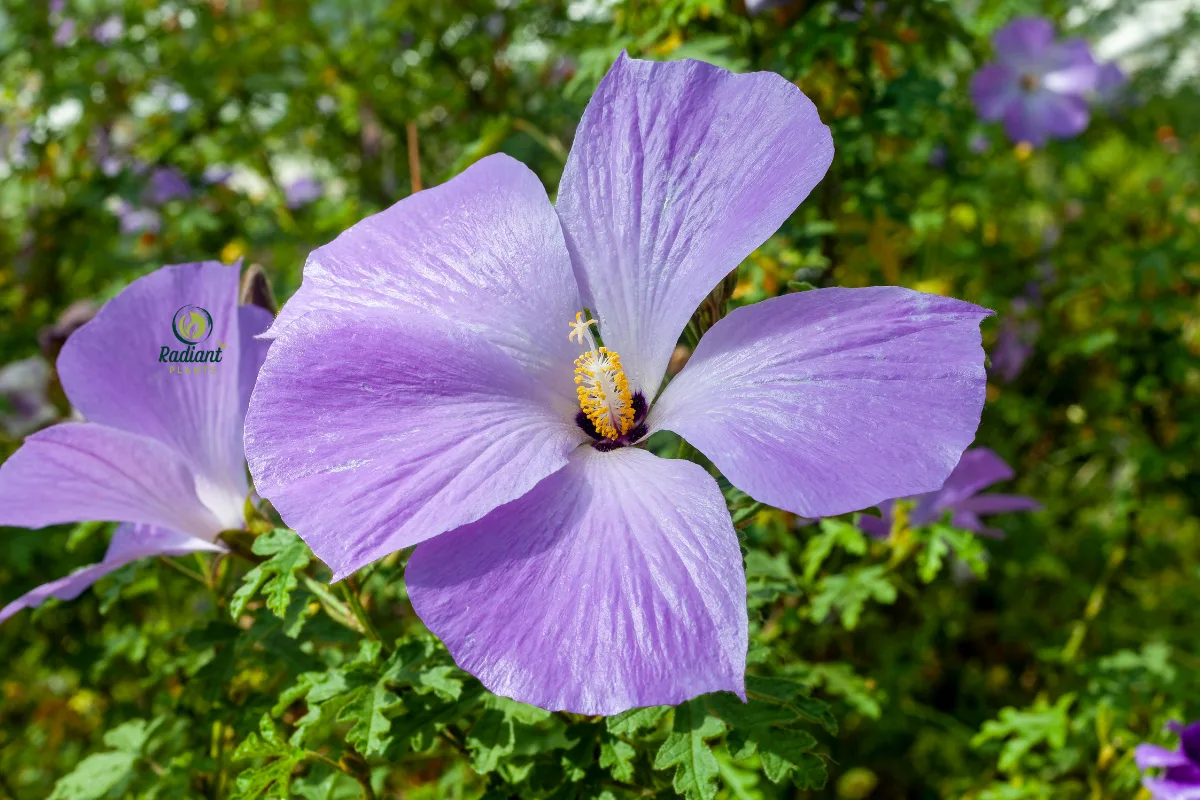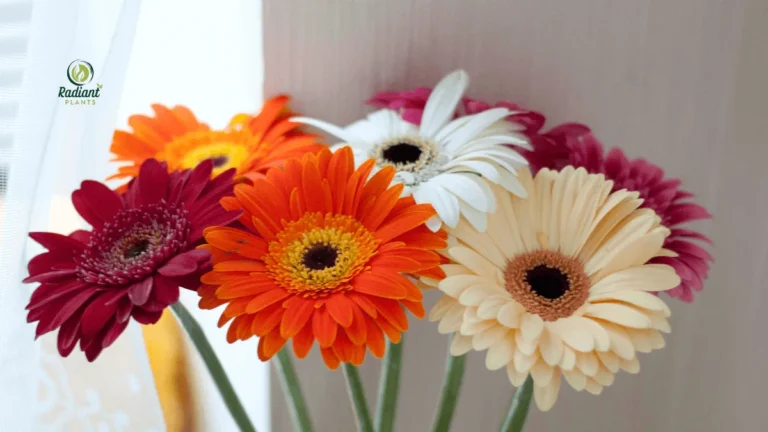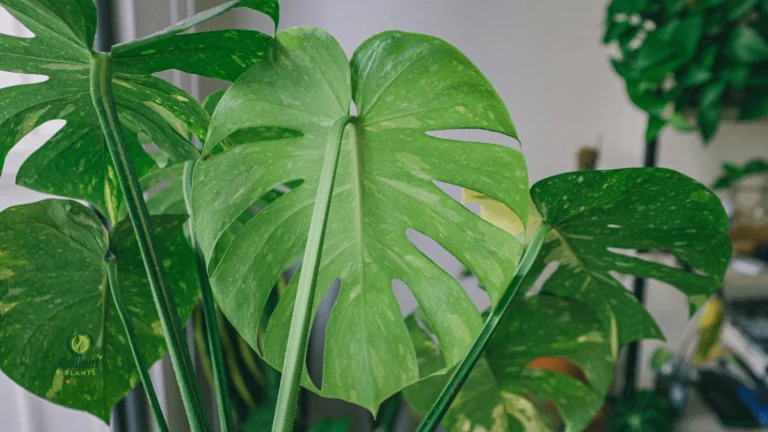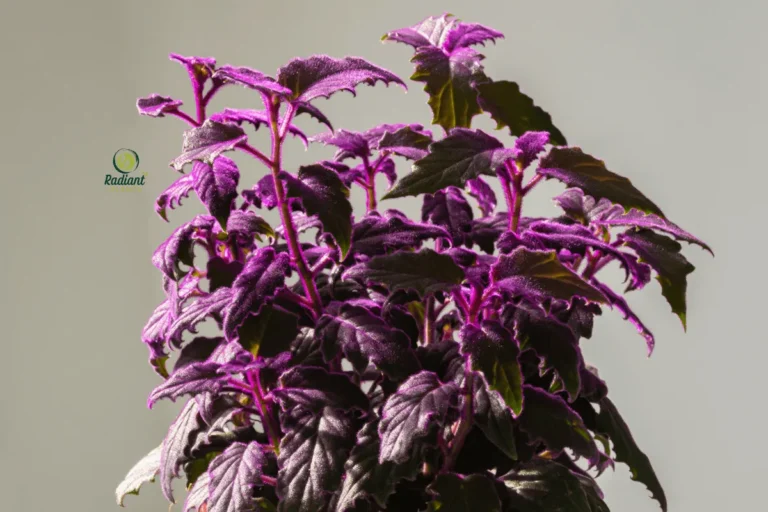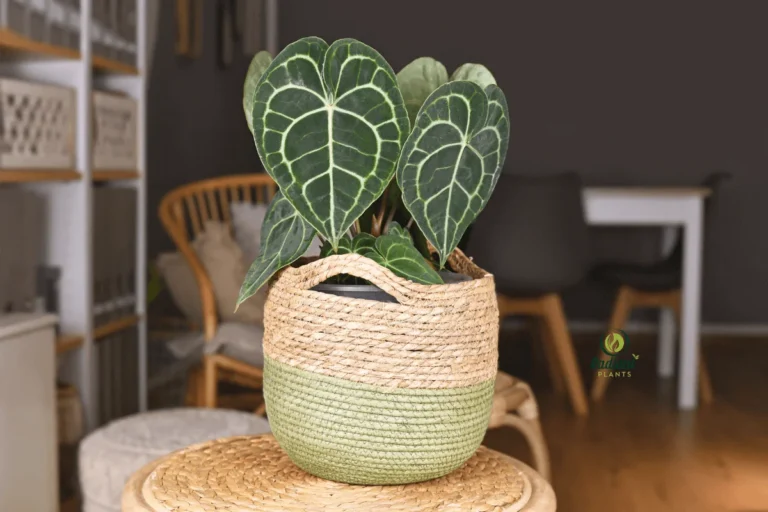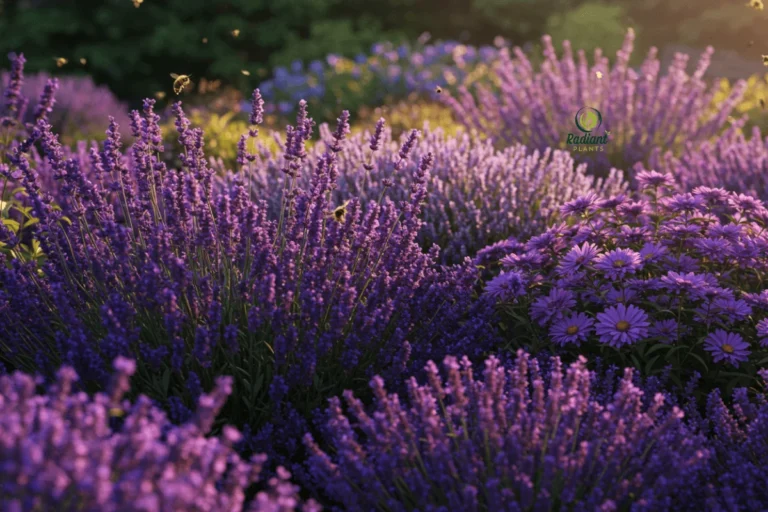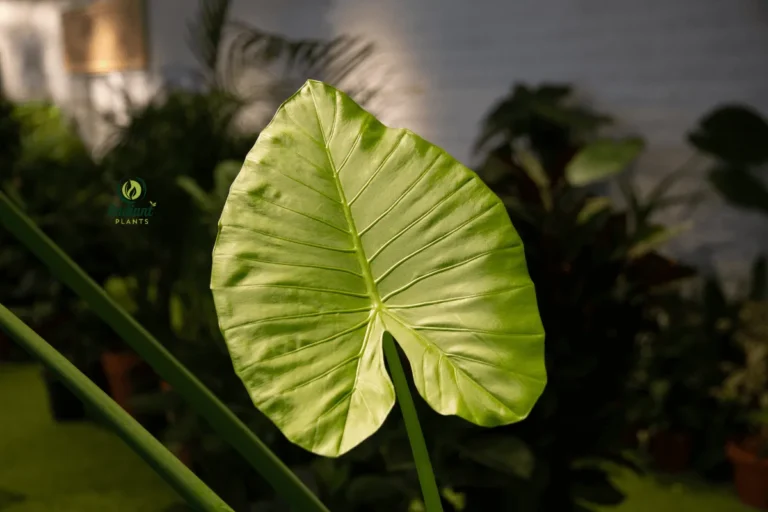Blue Hibiscus Plant: Why It’s a Stunning Addition to Any Garden
Imagine stepping into your garden and being greeted by vivid blue blooms swaying gently in the breeze. While blue flowers are a rarity in nature, the Blue Hibiscus plant (Alyogyne huegelii) stands out as an enchanting beauty, adding a touch of elegance and tranquility to any outdoor space.
Whether you’re a seasoned gardener or just starting, this drought-tolerant, easy-to-care-for shrub will reward you with months of continuous blossoms. Its striking blue-violet flowers, delicate petals, and lush green foliage make it a showstopper in any landscape.
In this guide, we’ll explore why the Blue Hibiscus plant is a must-have for your garden, how to care for it, and the best ways to showcase its beauty in your outdoor space. Ready to add a breathtaking floral masterpiece to your garden? Let’s dive in! 🌸✨
Table of Contents
🌱 What is the Blue Hibiscus Plant?



The Blue Hibiscus plant (Alyogyne huegelii) is an exceptional evergreen shrub, celebrated for its vibrant blue to purple flowers and its ability to thrive in a variety of conditions. Native to Australia, the Blue Hibiscus plant can be found in the wild along the coastlines, where it endures the hot, dry climates. This hardy plant is not only visually striking but also easy to maintain, making it a favorite for gardeners worldwide. Whether you’re looking for a new addition to your garden or a standout container plant, the Blue Hibiscus delivers year-round interest with its stunning blooms and evergreen foliage.
🔎 Overview & Botanical Background
- Scientific name: Alyogyne huegelii
- Family: Malvaceae (same family as hibiscus)
- Native to: Australia
- Bloom color: Blue to purple hues
The Blue Hibiscus plant is known for its large, glowing blooms that last throughout the spring, summer, and fall. Its distinctive blue to violet flowers can brighten up any garden, and their gentle, funnel-shaped petals are perfect for attracting pollinators like bees and butterflies. As an evergreen shrub, the Blue Hibiscus offers year-round greenery, even when it isn’t in bloom.
🌼 Blue Hibiscus vs. True Hibiscus: Key Differences
While the Blue Hibiscus plant shares many traits with its hibiscus relatives, it also has unique qualities that make it stand out. Understanding the differences between the Blue Hibiscus plant and true hibiscus varieties will help gardeners decide which one is better suited for their landscape needs.
Low maintenance, minimal pruning required | Blue Hibiscus (Alyogyne huegelii) | True Hibiscus (Hibiscus syriacus) |
|---|---|---|
Flower Color | Blue to violet | Various colors (pink, red, white, purple, yellow) |
Growth Habit | Evergreen shrub, compact and bushy | Deciduous shrub/tree, often larger and more tree-like |
Blooming Season | Spring to fall | Summer to early fall |
Drought Tolerance | Very high, thrives in dry conditions and poor soil | Moderate, prefers regular watering and richer soil |
Cold Hardiness | Suitable for USDA Zones 9-11, can tolerate light frost | Suitable for USDA Zones 5-9, can tolerate more cold |
Maintenance | Attracts bees but less commonly visited by hummingbirds | Requires more attention to pruning and pest control |
Wildlife Attraction | Attracts pollinators like bees, butterflies, and hummingbirds | Attracts bees but is less commonly visited by hummingbirds |
These distinctions show why the Blue Hibiscus plant might be the best choice for regions with drier conditions and mild winters, while the true hibiscus could be better suited to areas with cooler climates.
Alum Serendipity Plant: The Secret to a Stunning Garden
☀️ Why the Blue Hibiscus Is a Stunning Addition to Any Garden
The Blue Hibiscus plant (Alyogyne huegelii) is not only visually captivating but also highly versatile, making it an excellent choice for gardens of all styles. With its stunning blue blooms, low-maintenance care, and ability to thrive in drought-prone environments, the Blue Hibiscus plant is a game-changer in garden design. Here’s why it should be your next garden addition.
💙 Unique and Rare Blue Blooms
The most striking feature of the Blue Hibiscus plant is its vibrant blue flowers, which are a rare sight in the world of garden plants. While other flowers may come in shades of pink, red, or yellow, the Blue Hibiscus stands out with its soft blue to violet hues. This unique color will make a bold statement in your garden.
- Blue flowers are uncommon, making the Blue Hibiscus plant a showstopper in any landscape. Its bold blue blooms are sure to attract attention from passersby and visitors alike.
- The flowers are not just beautiful; they are long-lasting, blooming consistently from spring to fall, providing a season-long spectacle of color.
- The large, funnel-shaped flowers attract the eye and create an inviting, calming aesthetic in your garden, adding a touch of elegance and tranquility.
🏡 Perfect for Various Garden Styles
The Blue Hibiscus plant is incredibly versatile, making it ideal for a wide range of garden designs. Whether you have a cottage garden, a tropical oasis, or even a xeriscape, the Blue Hibiscus will fit in beautifully.
- In cottage gardens, the Blue Hibiscus adds a charming and natural touch with its graceful structure and vibrant blooms, enhancing the rustic feel of these gardens.
- For tropical gardens, the Blue Hibiscus brings a vivid contrast against the lush greenery, creating a stunning focal point.
- Xeriscapes, which focus on water conservation, are another excellent setting for the Blue Hibiscus. Its drought tolerance makes it a perfect choice for water-wise gardens in dry climates.
- The Blue Hibiscus works beautifully alongside neutral-colored plants, such as green foliage and soft-colored flowers, allowing its bold blue hues to create a striking contrast and a sense of balance in your garden.
🦋 Wildlife Attraction: Pollinators Love It!
The Blue Hibiscus plant does more than just beautify your garden—it also provides an eco-friendly boost by attracting a variety of pollinators.
- Its large, colorful flowers are a favorite for bees, butterflies, and hummingbirds, which are drawn to its nectar.
- By planting the Blue Hibiscus, you are supporting the local ecosystem, offering food and shelter for essential pollinators.
- These beneficial insects also help pollinate other plants in your garden, promoting a healthier, more productive landscape.
🌱 Low-maintenance and Drought-Tolerant
If you’re looking for a plant that requires minimal upkeep while still offering outstanding beauty, the Blue Hibiscus plant is perfect. It thrives in dry conditions, meaning you don’t have to worry about regular watering or frequent care.
- Low maintenance doesn’t mean sacrificing beauty. The Blue Hibiscus requires only minimal attention once established, making it ideal for gardeners who prefer easy-to-care-for plants.
- Drought-tolerant and able to thrive in poor soil, the Blue Hibiscus is perfect for areas with limited water availability, helping you conserve resources while maintaining a beautiful garden.
- The Blue Hibiscus plant is also resistant to pests compared to traditional hibiscus, reducing the need for chemical treatments and ensuring that your garden remains as eco-friendly as possible.
- It can survive through hot summers and dry spells, making it a great choice for arid climates or regions that experience frequent droughts.
🏡 How to Grow and Care for a Blue Hibiscus Plant
The Blue Hibiscus plant (Alyogyne huegelii) is a low-maintenance plant that thrives in warm, sunny conditions. By providing it with the right care and attention, you can enjoy its stunning blue blooms for many years. Here’s a comprehensive guide on how to grow and care for this beautiful plant in your garden.
🌞 Sunlight & Location
The Blue Hibiscus thrives in full sun but can tolerate partial shade. However, for optimal blooming, it requires 6 or more hours of sunlight per day. Placing it in a sunny spot will help the plant produce the most vibrant flowers, creating a striking focal point in your garden.
- Full sun to partial shade is ideal. In locations with intense sunlight, some afternoon shade may help protect the plant from scorching.
- Warm, dry climates are perfect for growing Blue Hibiscus. It does well in USDA Zones 9-11, where temperatures are moderate to warm.
- Choose a location with good air circulation to promote healthy growth and prevent fungal diseases.
💧 Watering Needs
Once the Blue Hibiscus plant is established, it is highly drought-tolerant. This makes it a great option for water-wise gardening in areas with dry conditions.
- During the establishment phase, water regularly to help the plant’s roots settle in.
- Once the plant is established, water it once a week during dry periods. However, it’s essential to avoid overwatering, as the plant prefers well-drained soil and doesn’t tolerate soggy conditions.
- Always allow the soil to dry out between waterings, as the Blue Hibiscus thrives in dry conditions.
- During the cooler months, reduce watering as the plant’s growth slows down.
🌿 Soil & Fertilization
The Blue Hibiscus plant prefers well-draining soil that allows excess water to flow away from its roots. Sandy or loamy soil is ideal. If your garden has clay-heavy soil, consider amending it with organic matter to improve drainage.
- Well-draining, sandy, or loamy soil is best for the Blue Hibiscus. If your soil is heavy and compact, mix in compost or sand to improve drainage.
- Fertilize the Blue Hibiscus with a balanced fertilizer (such as 10-10-10) during the growing season, which typically lasts from spring to fall.
- Avoid over-fertilizing, as this can lead to excessive foliage growth at the expense of flowers. A light application of fertilizer in early spring and mid-season will keep the plant healthy and encourage blooming.
- During the dormant season (winter), you don’t need to fertilize the plant, as its growth slows down.
✂️ Pruning & Maintenance
The Blue Hibiscus requires very little maintenance, but occasional pruning can help keep the plant looking its best and promote new growth.
- Prune in late winter or early spring, before new growth begins. This will help the plant maintain a compact shape and encourage fresh, healthy growth for the upcoming season.
- Remove dead or damaged branches to promote better airflow and prevent disease. Pruning also helps the plant focus energy on producing new blooms rather than maintaining old, unhealthy growth.
- To encourage bushier growth, you can also pinch back the tips of the plant’s branches in early spring, promoting more branching and a fuller appearance.
- Be cautious when pruning not to remove too many stems at once, as this can stress the plant and reduce bloom production.
By following these simple yet effective care guidelines, your Blue Hibiscus plant will thrive and reward you with years of beautiful, vibrant blooms. Whether you’re growing it in a tropical garden, a xeriscape, or a cottage-style garden, this hardy shrub will easily become a favorite for both its beauty and resilience. Let the Blue Hibiscus be your go-to plant for a striking garden addition that requires little maintenance but provides maximum impact!
🌍 Best Ways to Incorporate Blue Hibiscus into Your Garden Design
The Blue Hibiscus plant (Alyogyne huegelii) is incredibly versatile and can be used in various garden settings, whether you’re working with large spaces or small ones. Its unique blue blooms, combined with its hardy nature and low-maintenance needs, make it an excellent choice for a variety of garden designs. Here are some creative ways to incorporate this stunning plant into your garden.
🌸 As a Standalone Focal Point
The Blue Hibiscus plant is perfect for making a bold statement in your garden. Its striking blue flowers and bushy growth habit make it an excellent choice as a standalone focal point in your landscape.
- Position the Blue Hibiscus in the center of a flower bed or garden to draw attention from all angles.
- It works beautifully in entranceways or pathways, where its vivid blue blooms can welcome guests into your garden.
- For a more dramatic effect, plant it near light-colored shrubs or neutral-toned plants so the blue flowers pop.
- If you’re looking for a unique way to highlight your garden’s features, use the Blue Hibiscus as a showstopper in a secluded corner or as a backdrop for smaller, more delicate plants.
🌿 As a Hedge or Privacy Screen
The Blue Hibiscus has a dense growth habit, making it an ideal plant for creating a natural hedge or privacy screen. Its bushy foliage and vibrant flowers make it not only functional but also aesthetically pleasing.
- Plant several Blue Hibiscus together to form a beautiful, flowering hedge. Its dense foliage provides an effective privacy screen, shielding your garden or patio from the outside world.
- The Blue Hibiscus can be used as a living fence that adds both beauty and function to your outdoor space. This makes it perfect for garden borders, property lines, or backyard screening.
- The plant’s height can be controlled by regular pruning, allowing you to maintain the desired size and shape of your hedge or screen.
🏡 In Containers for Patios & Balconies
If you have limited space or live in an apartment, the Blue Hibiscus can be grown in containers on your patio, balcony, or even on a front porch. Its compact size makes it an excellent choice for small spaces.
- Blue Hibiscus thrives in large pots or containers, allowing you to enjoy its beauty even if you don’t have a full garden.
- It’s a great option for urban gardening—perfect for balconies or terraces where traditional ground planting isn’t possible.
- Container gardening also gives you the flexibility to move the plant to different spots for seasonal changes or to follow the best light conditions.
- Ensure the container has good drainage, and use well-draining soil to mimic the plant’s ideal conditions.
Incorporating the Blue Hibiscus into your garden design is an easy way to add color, texture, and functionality. Whether you want to make a bold statement in the center of your garden, create a lush, natural privacy screen, or bring a touch of beauty to your small outdoor space, this versatile plant can do it all. With its unique blue blooms and hardy nature, the Blue Hibiscus plant will bring lasting beauty to your garden year after year.
This expanded section provides more details on how to creatively incorporate the Blue Hibiscus into various garden settings, offering helpful tips for gardeners with different needs. Let me know if you’d like further adjustments!
❓ FAQs About the Blue Hibiscus Plant
The Blue Hibiscus plant (Alyogyne huegelii) is a popular choice for many gardeners, thanks to its stunning blooms and easy care. However, you may have some common questions about growing and maintaining this beauty. Here are answers to frequently asked questions:
Does the Blue Hibiscus plant attract pests?
No, it’s generally pest-resistant, but occasional aphids or spider mites may appear. Treat with insecticidal soap if needed.
Can the Blue Hibiscus plant survive in colder climates?
It thrives in USDA Zones 9-11. In colder areas, grow it in containers and bring it indoors during winter.
How often does the Blue Hibiscus bloom?
It blooms from spring to fall, with each flower lasting one day but quickly replaced by new buds.
Can I propagate the Blue Hibiscus plant?
Yes, propagate through softwood cuttings in spring or early summer.
Is the Blue Hibiscus plant toxic to pets?
No, it’s non-toxic to cats and dogs, making it safe for pet-friendly gardens.
🌿 Conclusion: Why You Need a Blue Hibiscus Plant in Your Garden
The Blue Hibiscus plant (Alyogyne huegelii) is truly a standout addition to any garden. With its rare blue blooms, low-maintenance care, and pest resistance, it offers both beauty and functionality. Whether you’re looking to add a striking focal point, create a natural privacy screen, or brighten up a small space, the Blue Hibiscus is versatile and adaptable.
Its ability to thrive in dry climates, coupled with its drought tolerance, makes it perfect for both beginner gardeners and seasoned experts. Plus, it attracts pollinators, making it an eco-friendly choice.
From its unique color to its easy care, the Blue Hibiscus is more than just a pretty plant—it’s a must-have for anyone looking to elevate their garden design. So, if you’re ready to enjoy stunning blooms and effortless beauty, the Blue Hibiscus plant is the perfect choice for your garden!
BLUE HIBISCUS ‘SANTA CRUZ’ | Alyogyne huegelii | WATER-WISE Perennial

